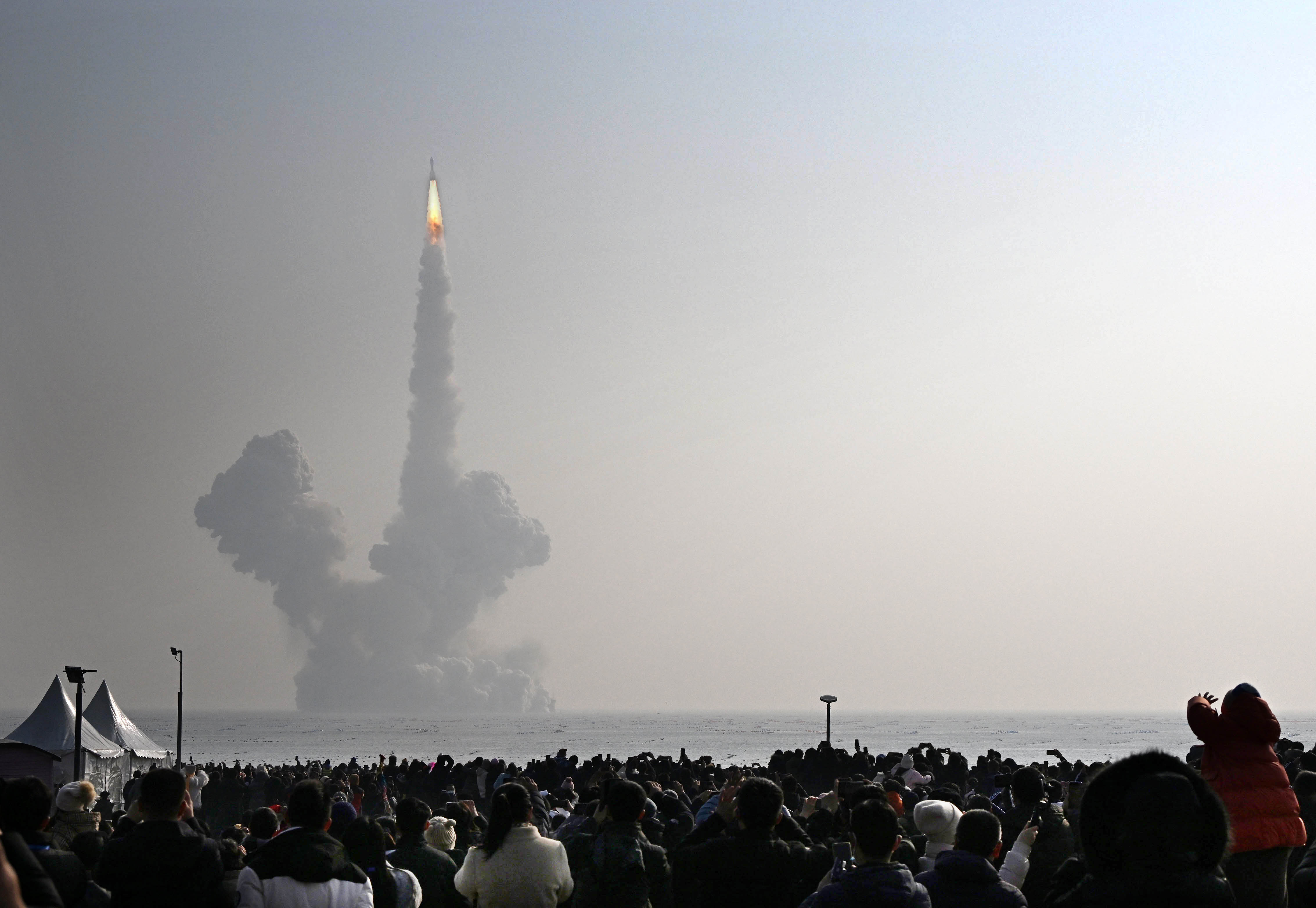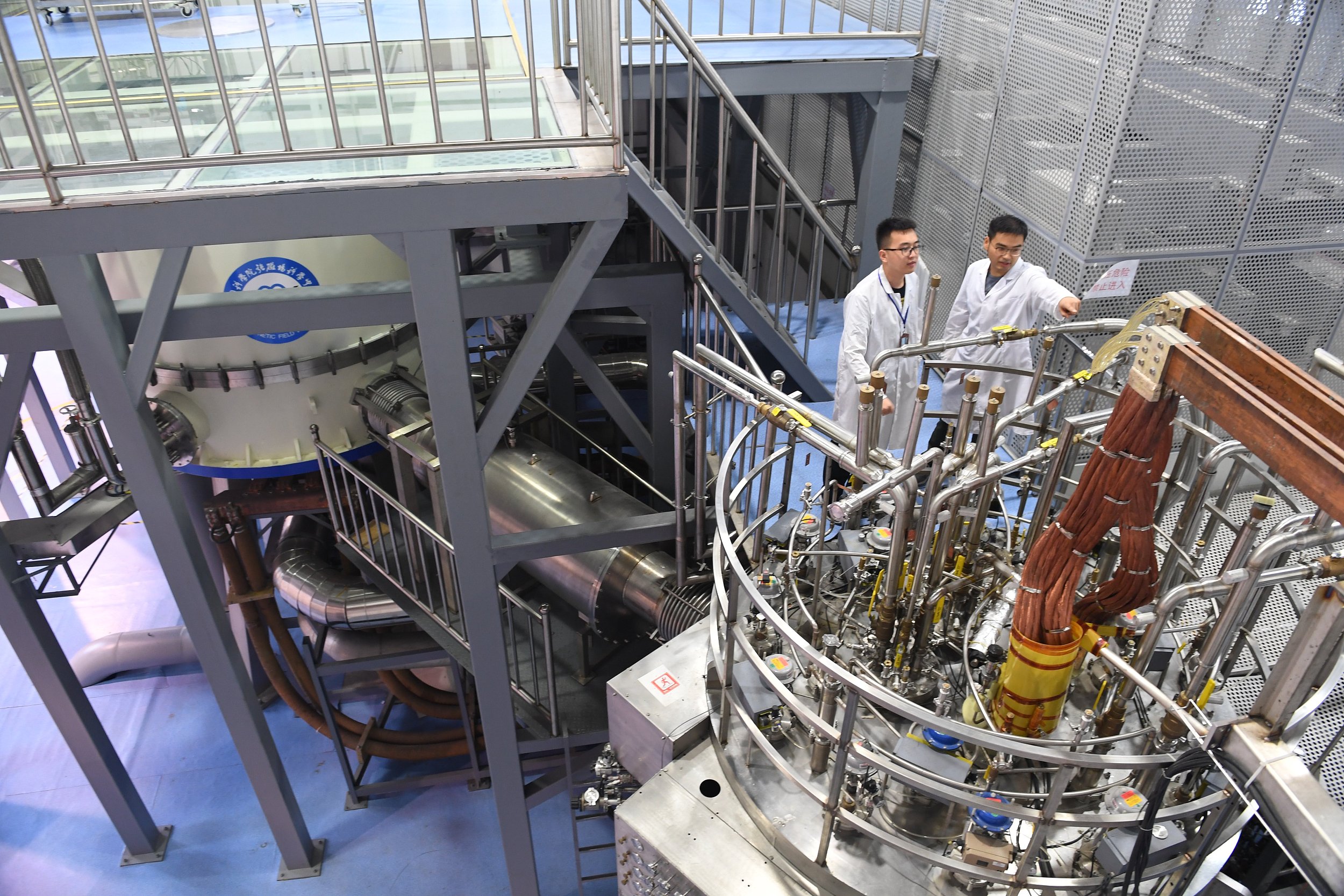Commercial Spaceflight Develops at Rocket Speed
On January 11, a Gravity-1 carrier rocket was launched from waters off the coast of Haiyang, Shandong. (PHOTO: XINHUA)
By Wang Xiaoxia
China plans to pull out all the stops to modernize its industrial systems and develop new quality productive forces, by fostering creative growth engines in fields such as biomanufacturing, commercial spaceflight, and the low-altitude economy, according to this year’s government work report.
In recent years, China's commercial spaceflight has shifted into a period of rapid development, and its market volume has exceeded one trillion RMB, becoming an important complement to China's space industry and injecting new momentum into the development of new quality productive forces.
Rapid development
On January 11, a Gravity-1 carrier rocket was launched from waters off the coast of Haiyang, Shandong, sending three satellites into a planned orbit. In the process, the rocket, developed by the commercial aerospace enterprise Orienspace, became the world's largest solid-fuel carrier rocket and China's most powerful commercial launch vehicle to date.
The successful launch of Gravity-1 indicates the rapid development of China's commercial spaceflight. According to the Blue Book of China's Aerospace Science and Technology Activities (2023), a total of 26 commercial launches were completed in 2023, accounting for 39 percent of the annual launches, with a success rate of 96 percent.
China's commercial space programme is creating an new industrial system and market system. A number of private companies have entered the fields of rocket launch, satellite production and manufacturing, and satellite application services. This has resulted in several leading enterprises demonstrating skill and capacity in rocket and satellite development, constellation deployment, and data services.
Technological innovation
Under a more flexible market mechanism, commercial spaceflight continues to promote the progress of space technology, and a number of technological breakthroughs have emerged.
In 2023, 41 satellites developed by Changguang Satellite were successfully launched, setting a record for the largest number of satellites launched in a single mission in China. In addition, the GalaxySpace built and launched a plate-shaped communications satellite called Lingxi 03, which is the country's first satellite equipped with a flexible solar array, while the Zhuque-2 rocket, developed by LandSpace, became the world's first methane-fueled rocket to reach Earth's orbit.
To meet subsequent needs of the market, China is developing 4-meter and 5-meter class reusable rockets, which are planned to make their maiden flights in 2025 and 2026 respectively, said the China Aerospace Science and Technology Corporation recently.
Strategic emerging industry
With the strong support of technological innovation, commercial aerospace continues with a process of industrial upgrade as it accelerates to be a new quality productive forces.
For example, Changguang Satellite has continuously optimized the satellite design and manufacturing technology to reduce the weight of Jilin-1 satellite from 400-kg level to 20-kg level. While ensuring satellite performance, the development cost has also been reduced to five percent of the original, laying the foundation for the rapid construction of commercial satellites constellation.
The Lijian-1 and Lijian-2 carrier rockets adopt a new development and manufacture mode. The modular design can largely reduce costs and enables the rapid delivery of rockets. The flexible solar array equipped on satellite Lingxi 03 also laid a solid foundation for the development of related industries in the future.
For commercial spaceflight, a global industry with strategic importance, international cooperation and competition are inevitable. China has signed more than 150 space cooperation documents with more than 50 countries and international organizations. Meanwhile, Chinese companies have carried out cooperation projects on the China Space Station platform and under the framework of the Belt and Road Initiative, in the fields of space scientific exploration and satellite data services.



